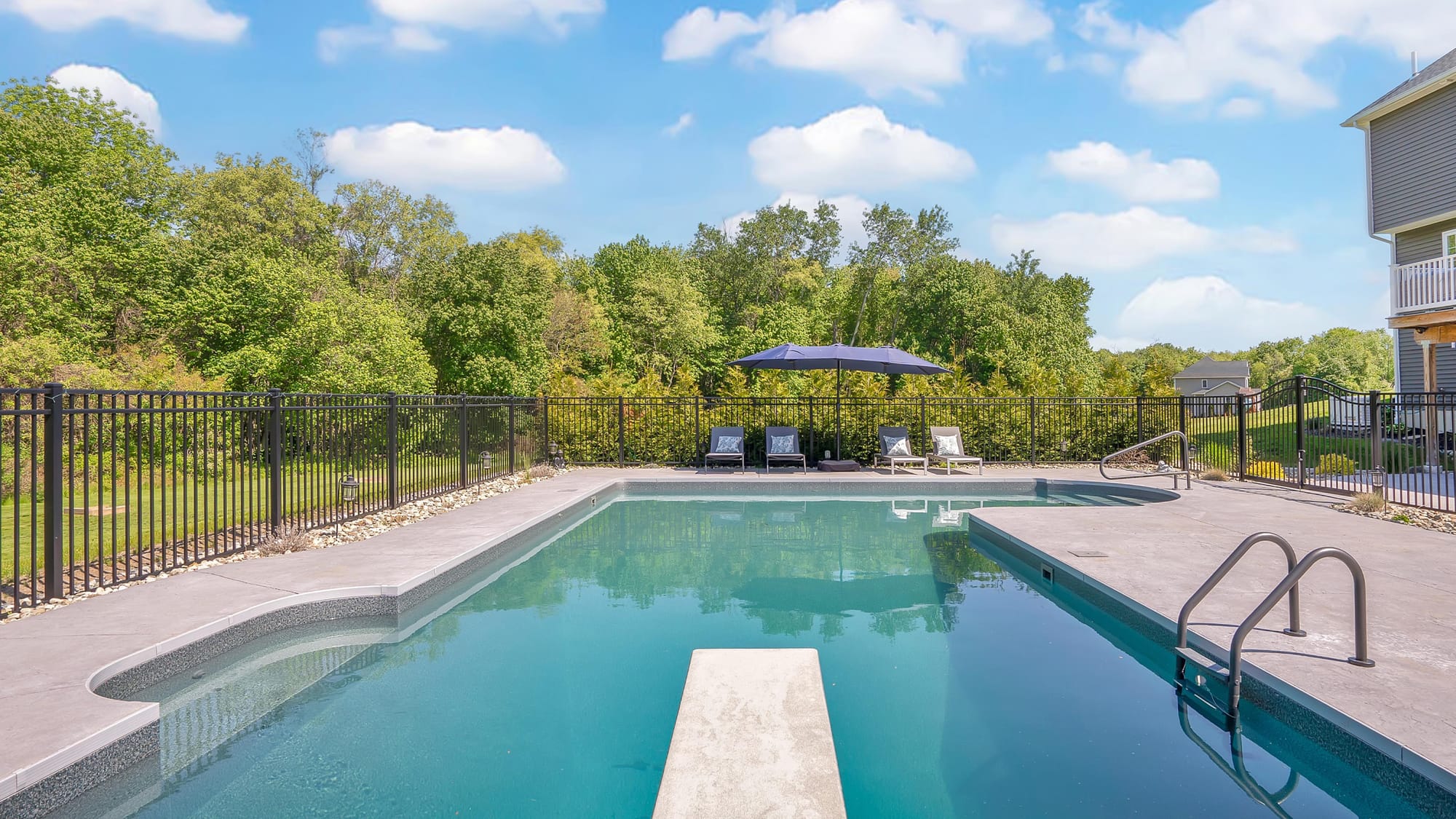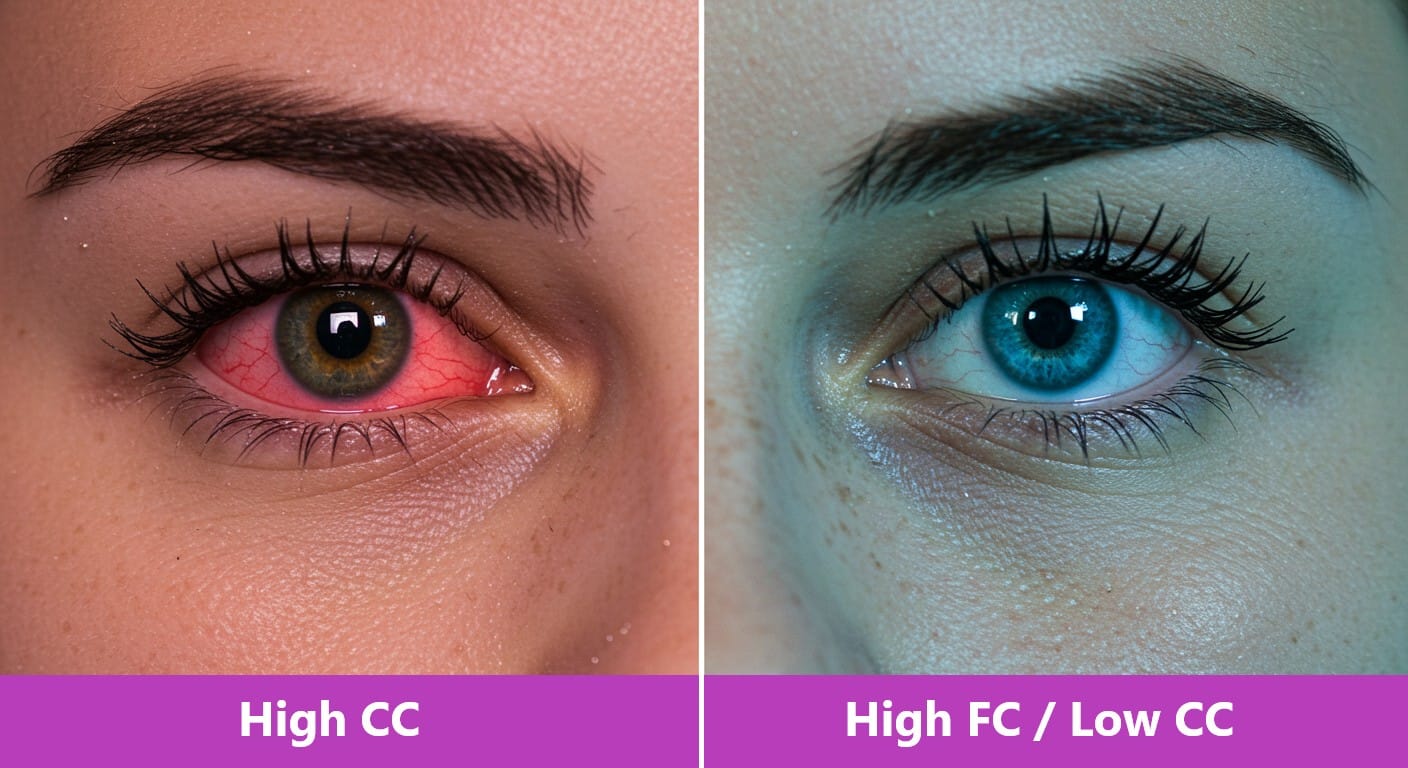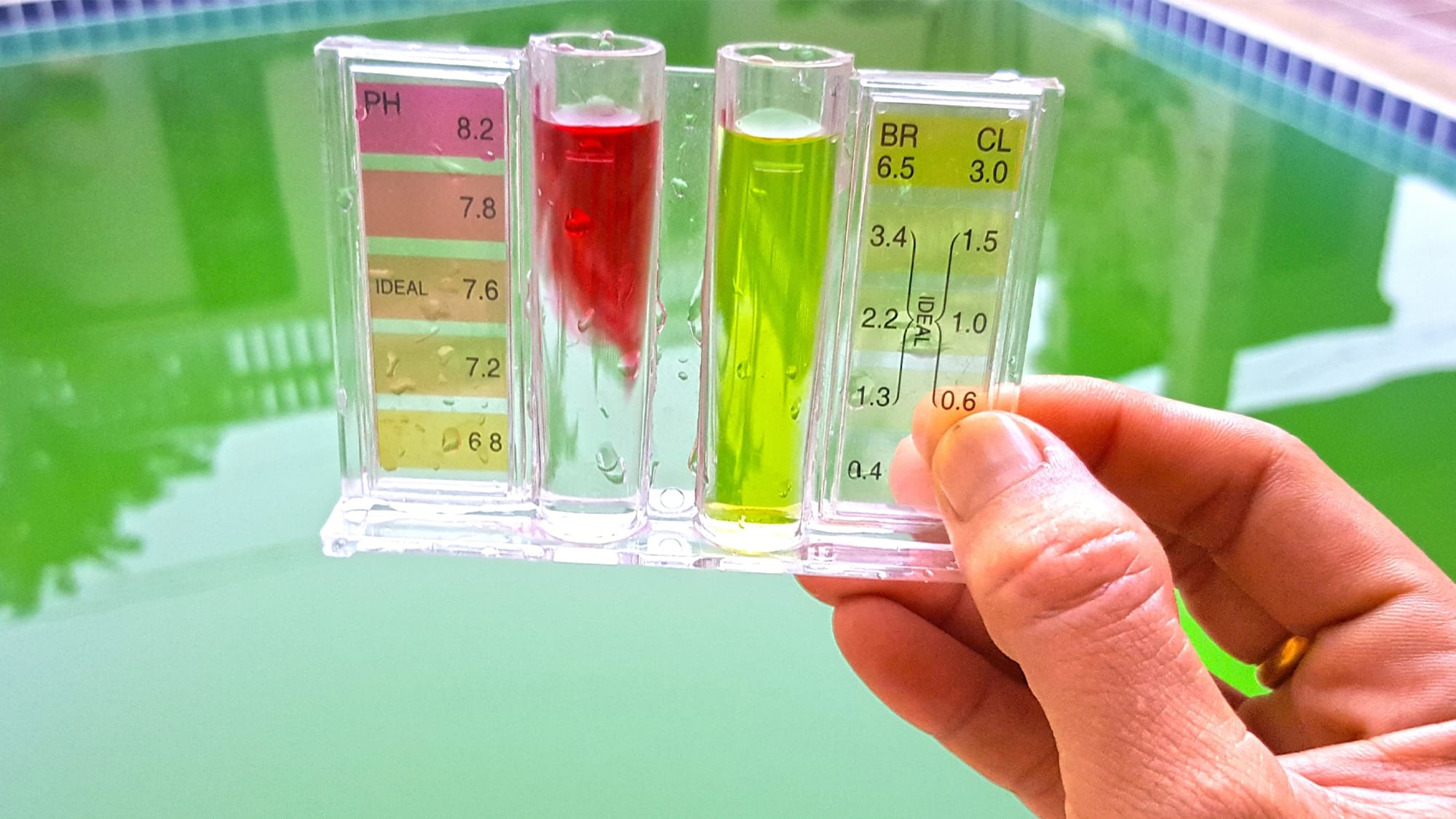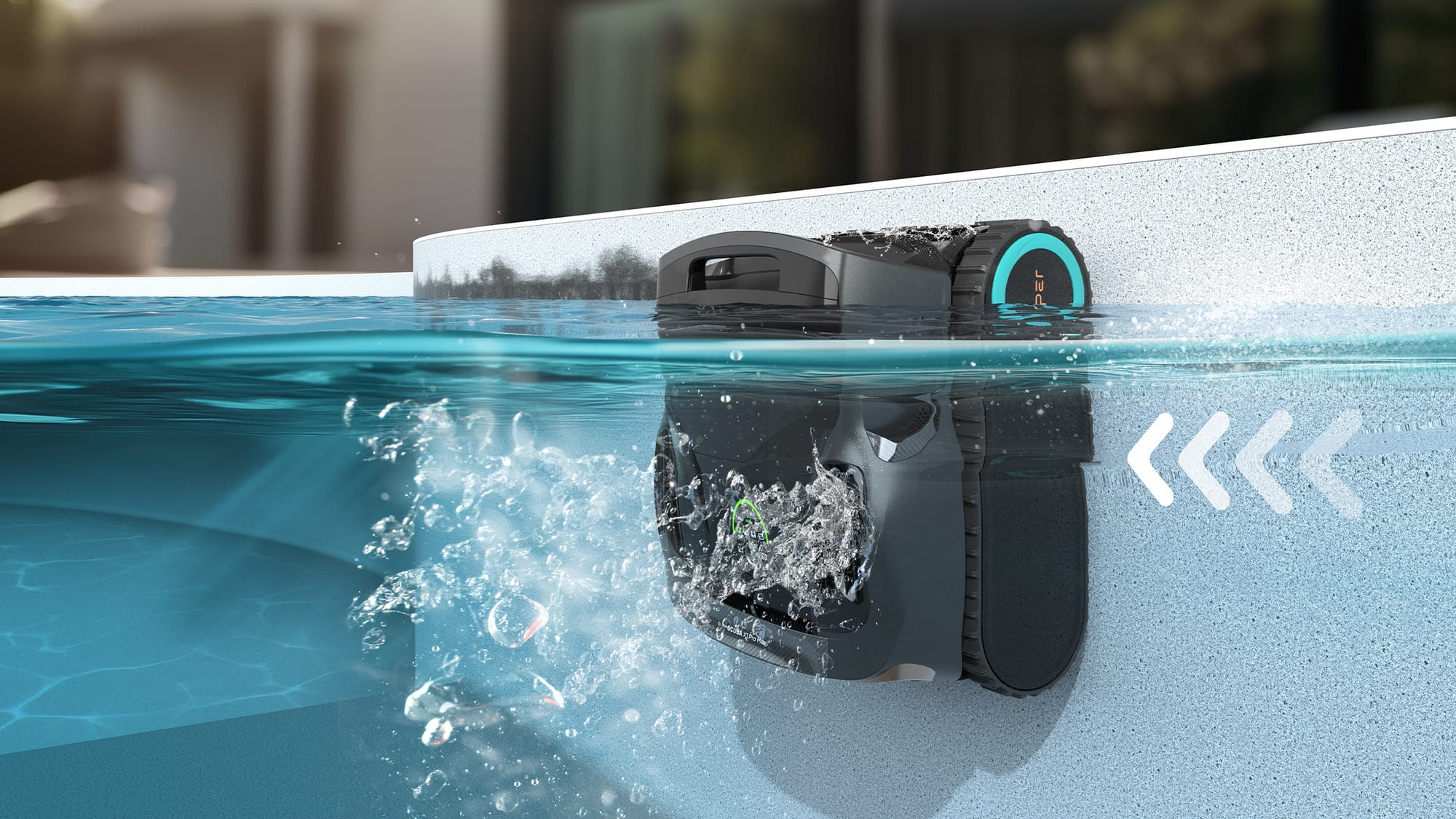What’s the Real Difference Between Total and Free Chlorine in Your Pool?

Ever wondered why your pool has a strong "chlorine" smell, or why your family's eyes get red and irritated after a swim, even when your test kit shows the chlorine level is "okay"? The answer often lies in the crucial difference between total chlorine and free chlorine.
Understanding these two readings is the key to unlocking a truly clean, safe, and pleasant swimming experience. This guide will break down what these terms mean, why the difference is so important, and how you can manage your pool water like a pro.
What is Free Chlorine (FC)? The Hero of Your Pool
Think of Free Chlorine (FC) as the active, hardworking sanitiser in your pool. It's the "good chlorine" that is available and ready to neutralise bacteria, viruses, algae, and other contaminants that enter the water.
In short, free chlorine is the single most important measurement for ensuring your pool water is hygienic and safe for swimmers.
What is Combined Chlorine (CC)? The Villain in Disguise
When free chlorine does its job and attacks contaminants like sweat, oils, and urine from swimmers, a chemical reaction occurs. The byproduct of this reaction is a compound called a chloramine, also known as Combined Chlorine (CC).
This is the "bad chlorine." As NSW Health points out, combined chlorine is the real culprit behind that harsh chemical smell and irritation to the eyes and respiratory system. It has very little sanitising power, and its presence is a clear sign that your pool's health is compromised.

What is Total Chlorine (TC)? The Sum of the Parts
Total Chlorine (TC) is simply the total amount of chlorine in the water. As the name suggests, it's the sum of the "good" and "bad" chlorine. The formula is straightforward:
Total Chlorine (TC) = Free Chlorine (FC) + Combined Chlorine (CC)
This is why measuring total chlorine alone doesn't tell you the whole story. A high TC reading could mean you have a healthy level of free chlorine, or it could be masking a serious problem with high levels of combined chlorine.

Total Chlorine vs. Free Chlorine: Why the Difference is Critical
The ultimate goal for any pool owner is to have the total chlorine reading be as close as possible to the free chlorine reading.
- Ideal State: When TC ≈ FC, it means your combined chlorine level is very low. This indicates a clean, healthy pool with effective sanitisation.
- Problem State: When TC is significantly higher than FC, it's a red flag. This tells you there's a buildup of combined chlorine in your water, which needs to be addressed immediately.
Here’s a simple table to break down the key differences:
|
Feature |
Free Chlorine (FC) |
Combined Chlorine (CC) |
Total Chlorine (TC) |
|
Role |
The "Hero": An active, effective sanitiser |
The "Villain": A used-up, irritating byproduct |
The "Total Count": A measurement of both FC and CC |
|
Smell |
Has very little odour |
The source of the strong "chlorine" smell |
Only smells if its CC component is high |
|
Effect on Swimmers |
Keeps water safe and clean |
Causes eye & respiratory irritation |
Irritating if its CC component is high |
|
Primary Goal |
Keep this level within the ideal range |
Keep this reading as close to the Free Chlorine level as possible |
Ideal Chlorine Levels for Pools
In Australia, industry standards guided by bodies like the Swimming Pool & Spa Association of Australia (SPASA), recommend the following levels for a residential pool:
- Free Chlorine (FC): 2.0 – 4.0 parts per million (ppm)
- Combined Chlorine (CC): Should be below 0.5 ppm, ideally 0 ppm.
- pH: 7.2 – 7.6 (chlorine is most effective in this range)
How to Test and Calculate Chlorine Levels Correctly
To get a clear picture of your pool's health, you must test for both free chlorine and total chlorine. Most quality pool test kits (using strips or reagents) allow you to do this.
- Test for Free Chlorine (FC): Follow your test kit's instructions to get the FC reading.
- Test for Total Chlorine (TC): Use the appropriate test or reagent to get the TC reading.
- Calculate Combined Chlorine (CC): Use the simple formula: CC = TC - FC.
If your CC is 0.5 ppm or higher, it's time to take action.

The Solution: How to Eliminate High Combined Chlorine (Shock Treatment)
The most effective way to remove combined chlorine is through a process called shocking, or breakpoint chlorination. This involves adding a large dose of an unstabilised chlorine product to the pool to oxidise, or burn off, the chloramines.
Steps for Shocking Your Pool:
- Wait until evening: The sun's UV rays can destroy chlorine, so it's best to shock your pool at dusk.
- Calculate the right amount: Follow the manufacturer's instructions on the shock product label based on your pool's volume. Always read the label.
- Circulate the water: Ensure your pool pump is running to help distribute the shock treatment evenly.
- Add the treatment: Pre-dissolve the product in a bucket of pool water if required by the instructions, then pour it around the edges of the pool.
- Wait before swimming: Keep the pump running for at least 8 hours and do not enter the pool until the free chlorine level has returned to the safe range (below 4.0 ppm).
Proactive Tips to Keep Combined Chlorine Low
Prevention is always better than cure. Here are a few tips to minimise the build-up of combined chlorine:
- Encourage a pre-swim rinse: A quick shower removes most of the sweat, oils, and cosmetics that create chloramines.
- Keep debris out: Regularly skim leaves and debris from the pool.
- Maintain your filter: A clean and efficient filter removes contaminants before they can react with chlorine.
- Consider an automatic cleaner: A robotic pool cleaner can continuously remove debris from the pool floor, reducing the overall contaminant load.

Conclusion
Mastering the difference between total and free chlorine is a game-changer for any pool owner. It's the key to moving beyond simply testing your water to truly understanding it. Remember that free chlorine is your pool's essential sanitiser, while a growing gap between your total and free chlorine readings signals a build-up of irritating combined chlorine. By testing regularly and taking action with a shock treatment when needed, you can ensure your pool remains a safe, sparkling, and inviting oasis for everyone to enjoy.
Maintaining perfect water chemistry is an ongoing task, but the right tools can make all the difference. For more expert tips on pool care and to explore our range of innovative robotic pool cleaners that help reduce contaminant load from the start, visit Aiper today.
Frequently Asked Questions About Pool Chlorine
Q1: Why does my pool smell so strongly of chlorine?
A: That strong "chlorine" smell is almost always due to high levels of combined chlorine (chloramines), not free chlorine. It's a sign that your pool needs a shock treatment to break down these irritating compounds.
Q2: Can I swim if the total chlorine is high but the free chlorine is low?
A: It's not recommended. This condition means you have a high concentration of combined chlorine, which is a poor sanitiser and can cause skin and eye irritation. The water is not being effectively sanitised.
Q3: How often should I test for free and total chlorine?
A: During the swimming season, it's best practice to test your water 2-3 times per week to ensure your levels remain balanced and your water stays safe.
Q4: What if my total chlorine is higher than my free chlorine?
A: This is expected, as Total Chlorine = Free Chlorine + Combined Chlorine. The key is how much higher it is. If the difference (your combined chlorine level) is less than 0.5 ppm, your pool is generally healthy. If the difference is 0.5 ppm or greater, it's time to shock your pool to remove the excess irritating chloramines.
Q5: Does combined chlorine go away on its own?
A: No, not effectively. Combined chlorine (chloramines) is a stable compounds that break down very slowly under sunlight. However, they are created much faster than they disappear. The only practical way to remove a significant build-up is to destroy it with a shock treatment chemically.

